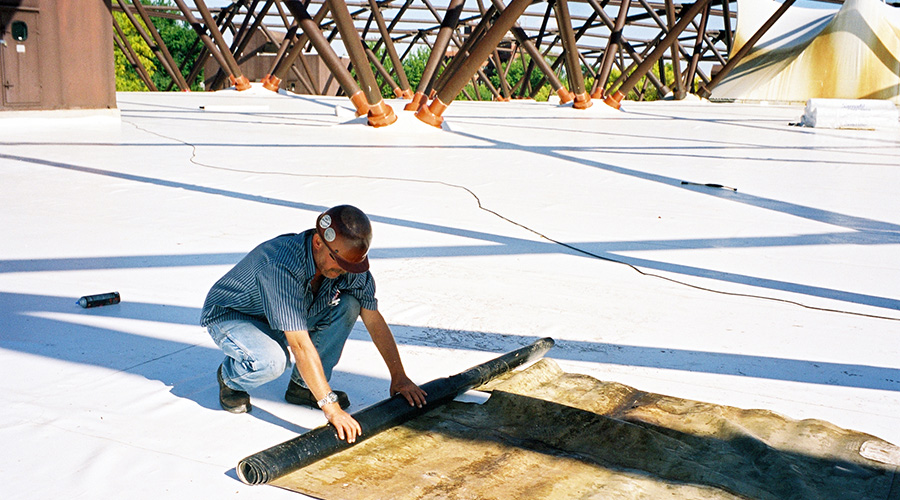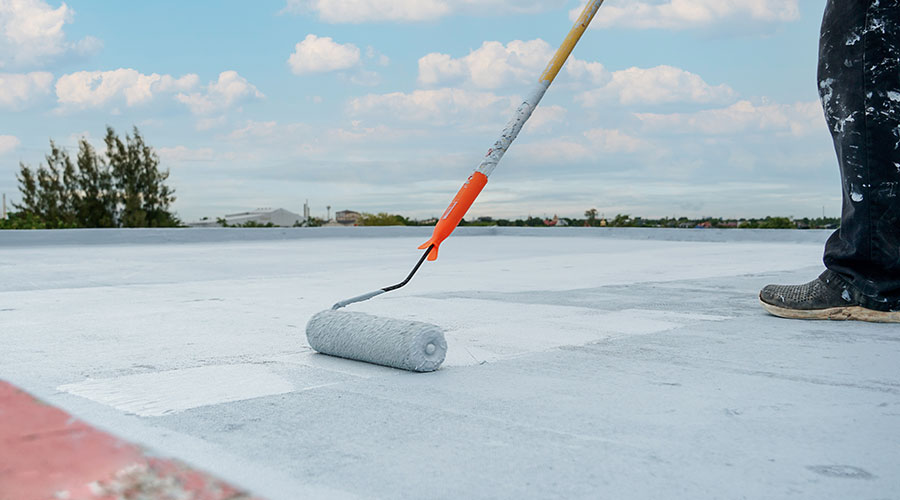 Roof inspection programs can be more effective if technicians perform regular roof management, which includes removing debris and cleaning around drains.
Roof inspection programs can be more effective if technicians perform regular roof management, which includes removing debris and cleaning around drains.How Roof Inspections Vary by Type
Roof inspection programs can be more effective if technicians perform regular roof management, which includes removing debris and cleaning around drains.
The most effective way to inspect any roof system, according to the National Roofing Contractors Association, is to start around the perimeter of the roof section, looking closely at the outer edge of the roof section, including edge metals, base flashings, and tie-in details. The next step is to focus on rooftop penetrations, which include curb flashings, pipe penetrations, pitch pockets, and hot stacks.
Finally, the inspector should check the field of the roof system from two different directions because while roughly one-half of roof deficiencies occur at the perimeter of the roof system, 30 percent occur around the penetrations, and 20 percent are associated with the field of the roof system. Experts have determined that focusing attention on the most common potential problem areas will lead to a more accurate inspection.
All roof systems share problems, such as physical damage, cuts, punctures, deteriorated sealants, separated seams, loose or open metal flashings, open coping joints, displaced fasteners, and open transition details. But developing a broad understanding of how various types of roof systems differ will improve the accuracy of the inspection.
Built-up. Since all built-up roof systems rely heavily upon the integrity of the ultraviolet (UV) protection of their surface, inspectors should closely examine the following components:
• Check for gravel displacement, where the surface plies are worn or where plies of the membrane are exposed.
• Check the thickness of the surface coating if the system is a smooth surface built-up roof system, looking for coating voids or deterioration.
• Check for splits in the plies of the system where the felts might be exposed.
• Look for any ridges within the system’s field where the interplay adhesion has been compromised.
• Inspect the edges of rooftop penetrations and associated flashing.
Modified bitumen. Since all modified bitumen roof systems rely heavily upon the integrity of the granule surfacing to provide UV protection, inspectors should check the following items:
• Check for thin or deteriorated sections of granules.
• Check for staining that might indicate pockets of ponding water.
• Note areas of isolated ponding water, since it is extremely detrimental to modified sheets.
• Check for membrane splits.
• Check for open seams in flashing or field of the roof, as well as low or deteriorated pitch pockets.
• Check for vertical displacement on walls.
Single-ply. Since the integrity of the actual single-ply membrane is very rarely affected, the primary focus of this inspection should be small areas where the bond between the different sections of membrane have separated.
EPDM and thermoplastic:
• Check for open seams in the field membrane.
• Check for open seams at edge details and flashings.
• Check for low or deteriorated pitch pockets
• Check for damage to the surface from contaminates or any discharge that could affect the membrane.
EPDM:
• Check for deteriorated flashing sealants.
• Check for bridging or vertical displacement on walls.
• Check for signs of membrane depilated elasticity
• Check for deteriorated exposed edge sealants.
Thermoplastic:
• Check for cold open welds.
• Check for damage along membrane seams.
• Check for debris under the membrane.
The most important part of roof maintenance is having an inspection program in place. Large facilities or multi-facility managers will find a roof asset management program especially invaluable in scheduling inspections, maintenance, and overall budget forecasting. Through proper forecasting, managers can project capital needs well into the future, avoiding unexpected expenditures and delays.
A roof system over a building is a valuable asset, though it is often overlooked. Once a roof starts to fail, the repairs can be costly, and the interruption to the facility can be expensive. By inspecting each roof system regularly and providing for as-needed repairs, managers can extend the service life of the existing roof systems and greatly reduce capital expenditures.
Michael Spach is a roofing and building enclosure specialist with Smith Seckman Reid in Nashville. He has been in the roofing industry for more than 30 years and has worked as a roofing contractor and a roof consultant. He is a registered roofing observer and a certified level 1 infrared thermographer.
Related Topics:















